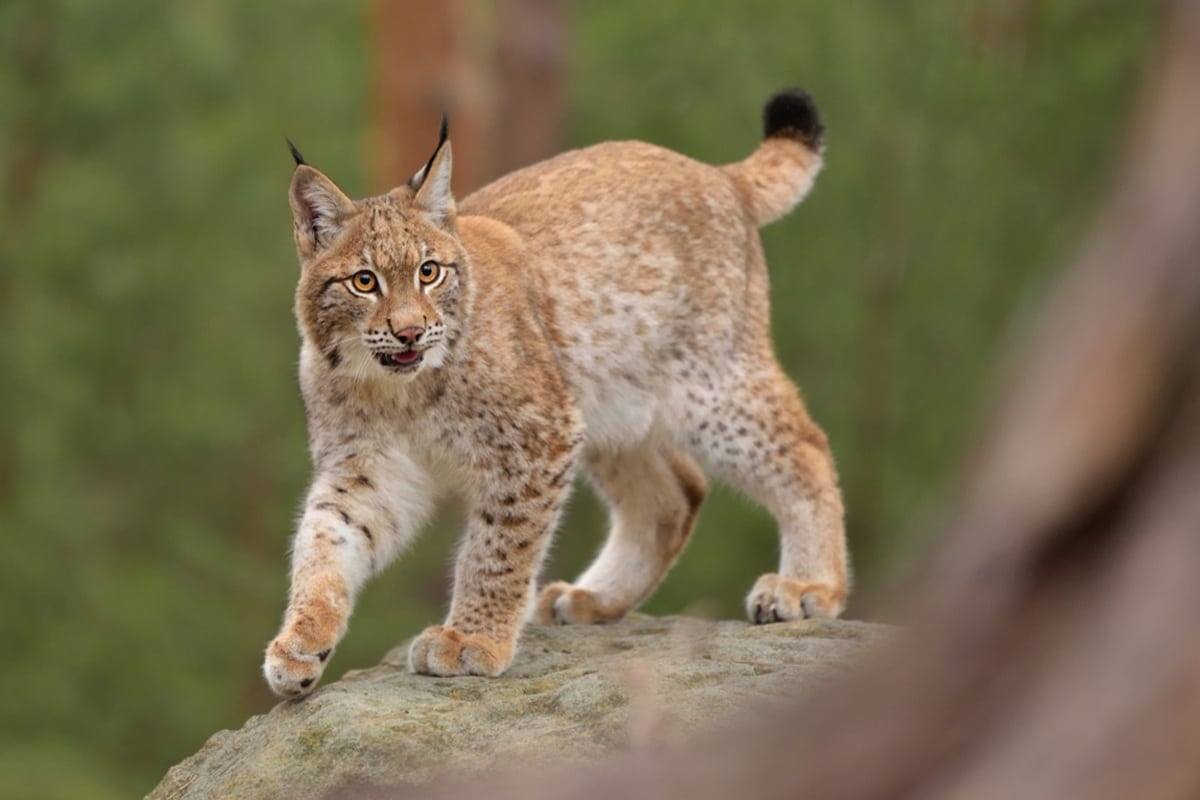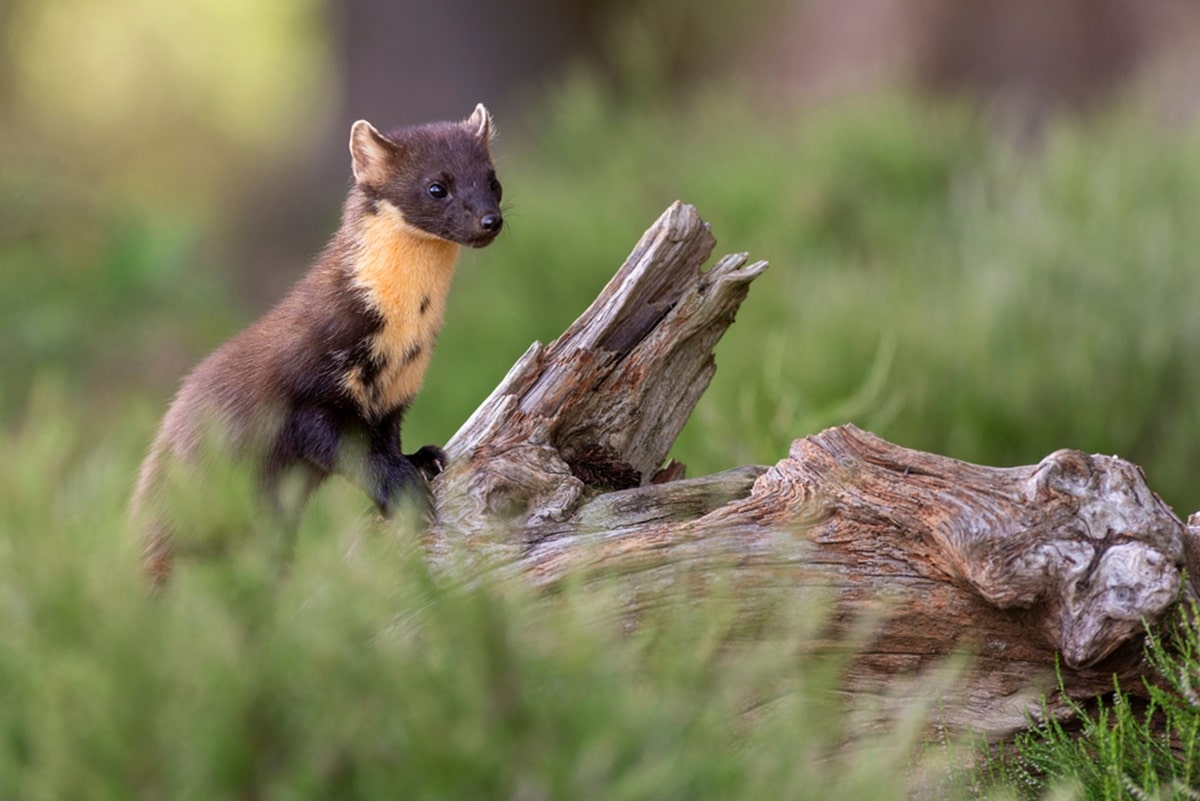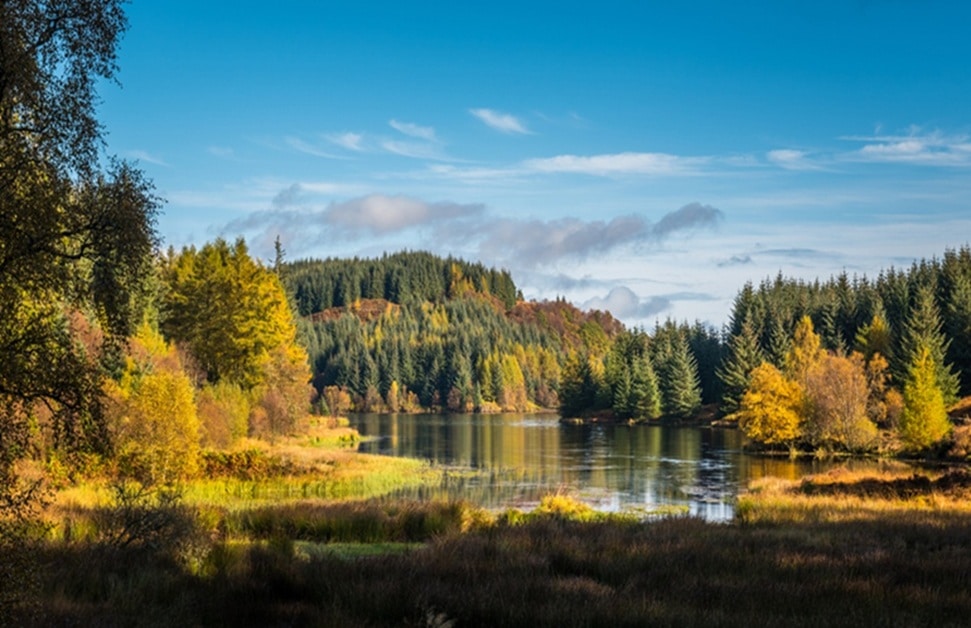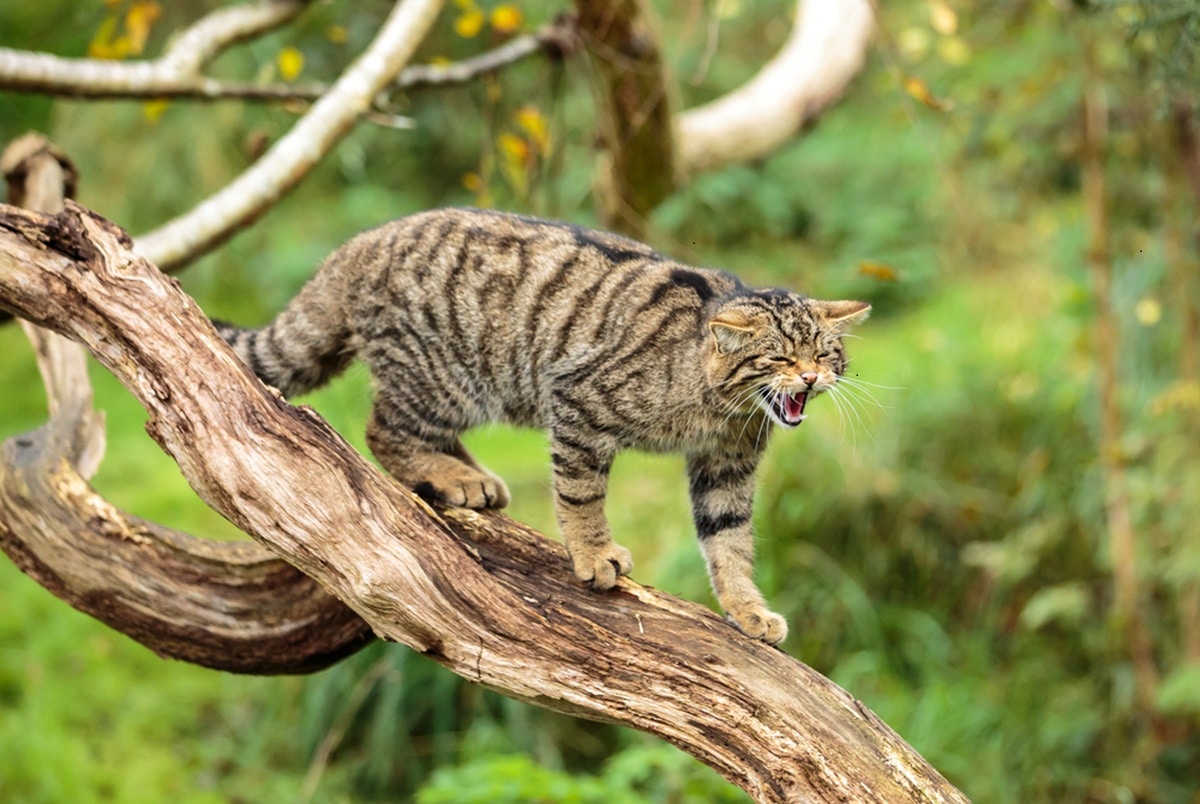
The sighting of kittens in the Cairngorms has been hailed as a major milestone in the struggle to save Britain’s only native cat species. We find out why the Scottish wildcat reached the edge of extinction and why the Cairngorms is providing a promising home.
The Story so Far: Wildcats on the Brink
The Scottish wildcat was once common across Britain and is similar in appearance to the domestic tabby, but has tail banding, a broader head and a thick, blunt tail. Over the 20th century populations fell sharply due to habitat loss, persecution, and changing land use. A further threat emerged: hybridisation with domestic and feral cats. Genetic studies and long-term surveys concluded that many of the `wild’ cats seen in Scotland today carry domestic genes, producing a genetic mix rather than a distinct, healthy wildcat population.
By the late 2010s scientists warned that the Scottish wildcat was `functionally extinct’ in the wild without decisive intervention. Conservation efforts under the banner Scottish Wildcat Action and later the Saving Wildcats partnership built a multi-partner, science-led response: captive breeding of genetically vetted wildcats, intensive habitat assessment, community engagement, and, crucially, steps to reduce hybridisation through local neutering and responsible cat ownership campaigns.
Scotland’s nature agency NatureScot concluded that without reinforcement from captive-bred animals, the species had little chance of recovery. In 2023 it granted a licence for a carefully designed trial release into the Cairngorms Connect landscape.
In 2024 camera traps filmed wildcat kittens born to females that had themselves been released into the area as part of a carefully planned reintroduction.
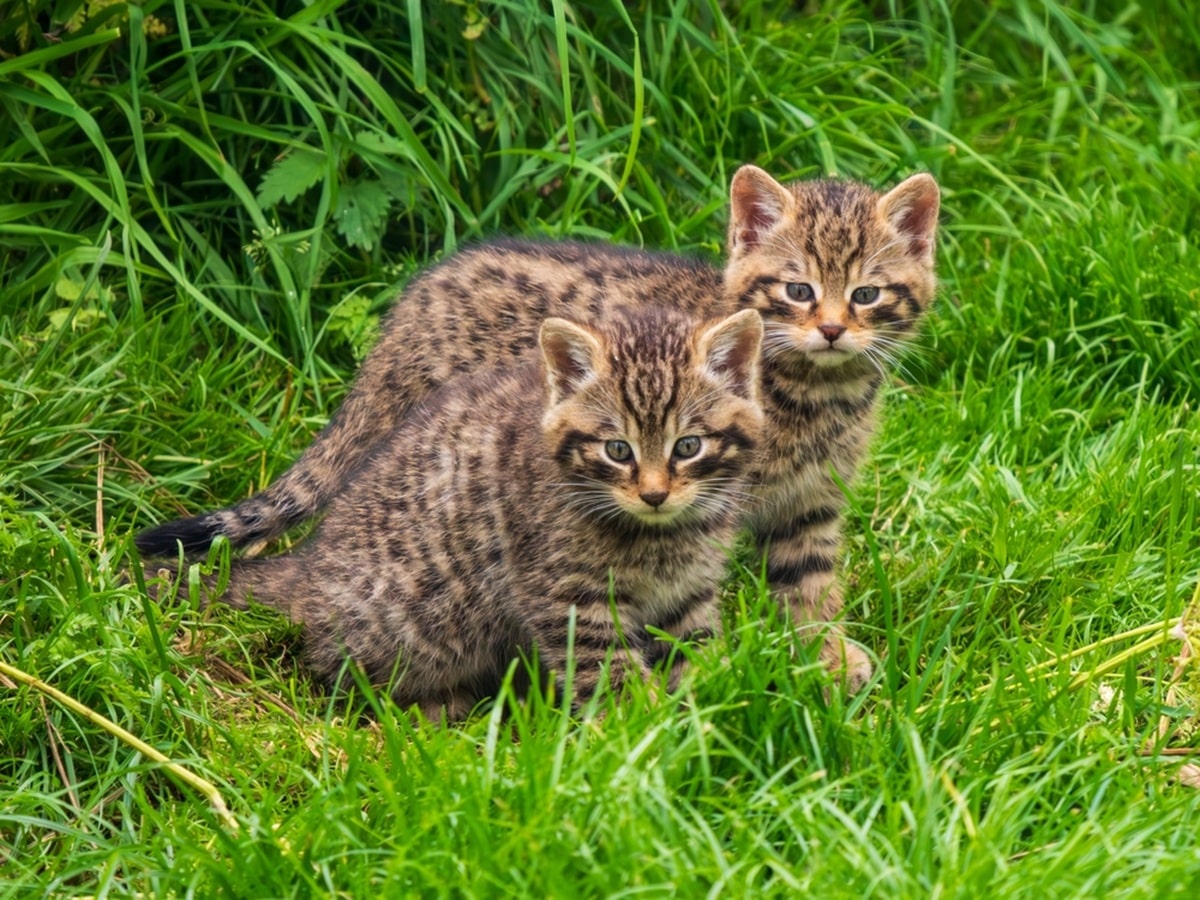
Why the Cairngorms?
The Cairngorms National Park offers a combination of features that suit wildcats: large areas of mixed woodland, extensive heather moorland, few humans and a plentiful food supply: primarily rabbits, voles and other small mammals. Wildcats favour habitats comprising veteran trees, dense scrub and edge habitats where they can hunt by night and find den sites in rough grass or bracken. The Cairngorms’ mosaic of woodlands, wetland areas and open ground provides exactly this mix.
Conservation partners also emphasised practical reasons for the site selection. The Cairngorms Connect landscape benefits from strong local partnerships with estate managers, gamekeepers and community groups, and has an extensive existing monitoring infrastructure including camera-trap networks, wildlife staff, and local volunteer networks, all essential for tracking released animals and responding quickly to problems. NatureScot has stressed that the reintroduction was only approved because of that groundwork and the commitment of local people.
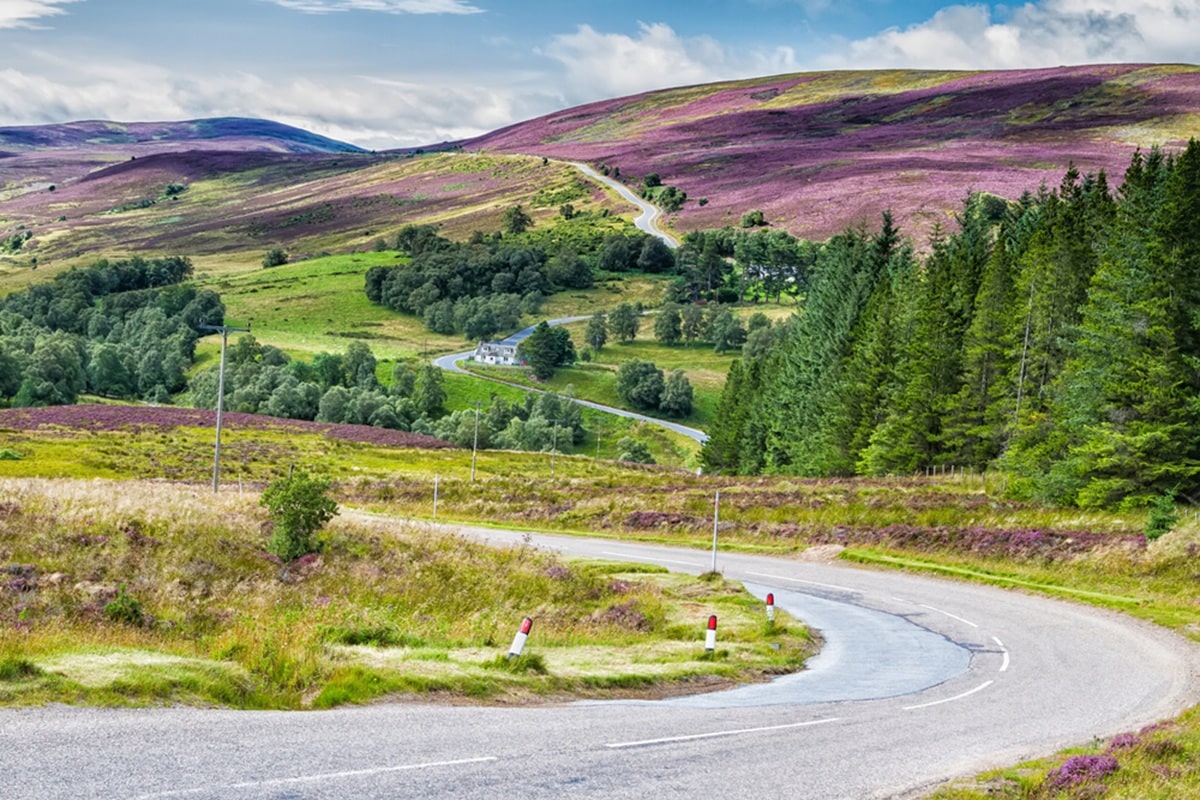
How was the Breeding Programme carried out?
Saving Wildcats, a partnership led by the Royal Zoological Society of Scotland (RZSS) together with NatureScot, Forestry & Land Scotland, Cairngorms National Park Authority and international partners, established a captive-breeding-for-release programme at the Highland Wildlife Park and partner facilities. The programme selects breeding animals to maximise `wild’ genetic integrity and minimise domestic genes. Successful breeding produced groups of kittens for release.
In June 2023 the first group of captive-bred wildcats, around 19 animals, were fitted with GPS-radio collars and released into carefully selected zones. Releases were staggered, with animals held for acclimatisation in large pre-release enclosures that provide natural cover and hunting opportunities before doors were opened.
Post-release monitoring combined GPS tracking, an extensive camera-trap network, DNA sampling when feasible, and field teams for day-to-day welfare checks. The project also ran complementary actions: vaccinating and neutering free-living cats in the release area, encouraging pet-cat neutering and microchipping, and liaising with land managers to reduce persecution risk.
The good news came in 2024 when camera footage and monitoring confirmed that multiple released females had made dens and raised kittens in the wild. As Dr Helen Senn, Saving Wildcats project lead at RZSS, stated:
This is a major milestone for wildcat recovery in Scotland. These births demonstrate that the process of breeding wildcats for release into the wild is working… they have learned to hunt and survive – and now reproduce in their first breeding season.
Who is Monitoring the Project?
Many organisations are involved: the Saving Wildcats field team tracks GPS-collared individuals daily and reviews camera-trap footage; partner organisations NatureScot, Forestry & Land Scotland and the Cairngorms National Park Authority provide regulatory oversight and habitat management; academic partners contribute genetic testing and ecological analysis, and community volunteers carry out surveys. This mix of statutory, academic and charity partners is what gave the programme the scientific rigour and local acceptance it needed.
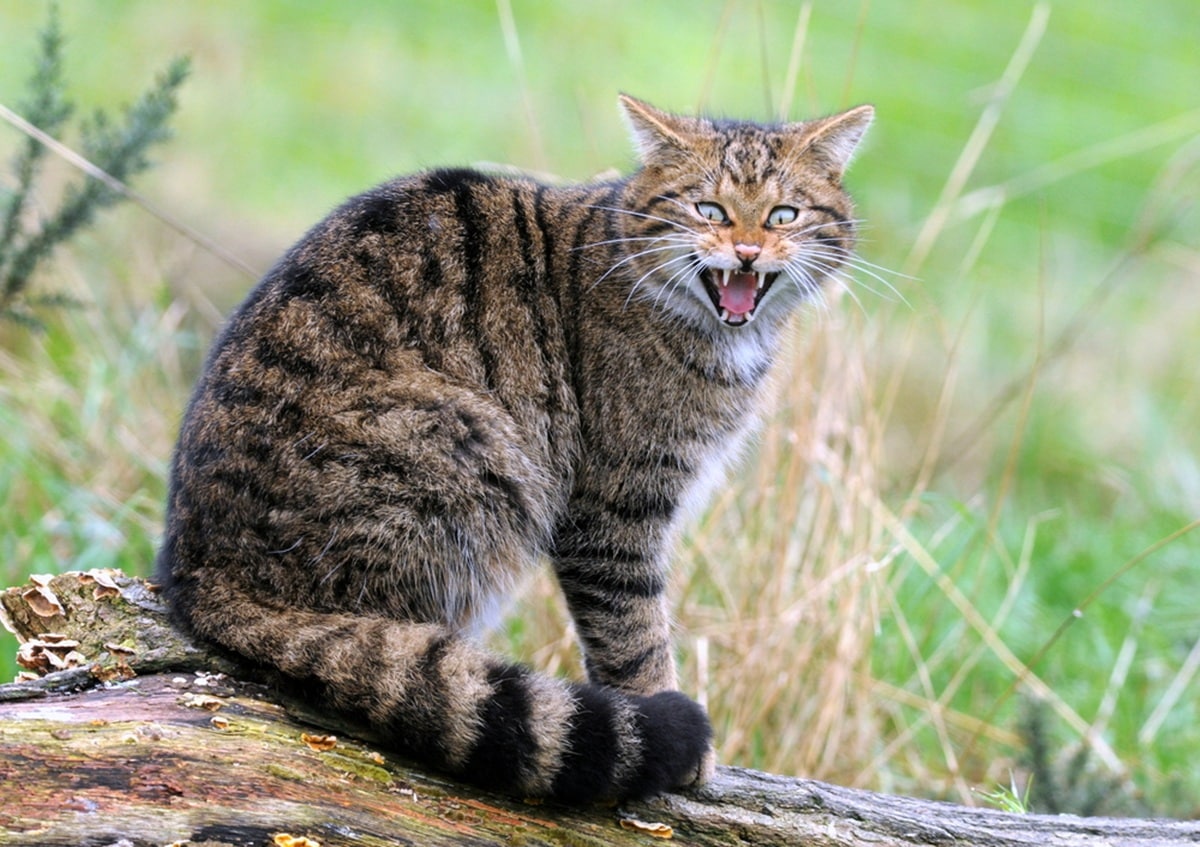
Why is Birth in the Wild so Important?
Seeing kittens born in the wild is the central test of any reintroduction; it’s crucial because it shows released animals are not only surviving but reproducing. Project updates indicate dozens of releases across 2023–2025: the first tranche of around 19 in 2023, further releases in subsequent seasons, and updates suggest roughly 28-35 animals had been released by mid-2025.
NatureScot’s approval document gave a target of approximately 60 animals to be released over a multi-year trial to establish a viable nucleus population. Exact wild population numbers in the Cairngorms remain fluid: monitoring confirms resident released individuals and litters, but the long-term aim is to move from reliance on releases to a self-sustaining wild population.
What are the Main Threats facing the Wildcats?
Project managers emphasise that releases are only part of the solution. The historic and continuing threat of hybridisation with domestic and feral cats remains; genetic work under Scottish Wildcat Action revealed that many wild-living cats are hybrids. The project therefore combines releases with work to neuter and vaccinate feral and owned cats, and public messaging aimed at pet owners. NatureScot has been clear that success depends on removing the threat of hybridisation and preventing persecution.
Vehicle collisions, disease, and local conflicts with game management also present risks. The project’s monitoring and community engagement aim to identify and reduce such incidents rapidly, and to adapt management where needed.
How Can People Help?
Practical steps include neutering and microchipping pet cats, supporting charities such as RZSS and Saving Wildcats, reporting sightings to local project teams, and backing habitat protection measures. Projects are also funded partly by public grants and donations, so financial support matters.
What does the Future Look Like?
There is real optimism. The footage of wild-born kittens demonstrates that reintroduced animals can learn survival skills and reproduce. If the project continues to release groups of wildcats, sustain rigorous monitoring and keep hybridisation and persecution under control, conservationists hope a small, breeding population could become established in the Cairngorms over the coming decade.
Even so, success will not mean wildcats are safe everywhere in Scotland. The process requires ongoing releases, habitat management, genetic surveillance and community support: especially responsible cat ownership. Dr Senn has suggested that a local wild population of 40 animals would represent a meaningful early success, but the endgame is a viable population that no longer needs human intervention.
A Second Chance for Wildcats
The sight of wildcat kittens in the Cairngorms is evidence that a carefully designed, science-driven programme, combining captive breeding, ethical release, monitoring, and community partnership, can give a species a second chance. While their future is fragile, for the first time in many years conservationists have evidence that wildcats might once again survive in the wild.

